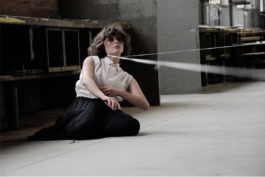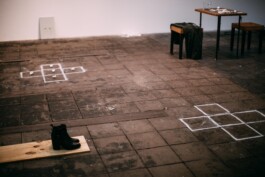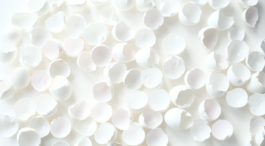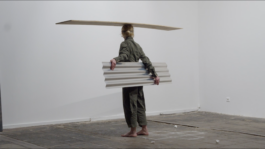HASMIK TANGYAN
Place of Residency
Weltkunstzimmer Düsseldorf
Hasmik Tangyan is an artist and somatic psychologist based in Yerevan, Armenia. She works in combinations of video, performance, installation and dance, often collaborating with musicians, photographers and other artists from different disciplines. Since 2017, her work has focused on confronting and exploring the historical and national identity issues within the development of a performance and contemporary dance in Armenia. Currently, she is researching how memories and traumas are passed on from generation to generation through our bodies. She is interested in how the body reacts to war, how we become stuck in certain positions, and how we deal with movement, freezing, life, and pleasure. Her practice is not about elimination, but negotiation and reflection. She uses her own history, experience, and feelings as a starting point, also she works with childhood memories and games to find playfulness and a source of life.



Discipline
choreography, performance, dance, video

Her primary medium is the body, both in performance, choreography, and video. In her choreographic works, she explores the transformations of games, daily life routines, and objects as possibilities for going back historically and analyzing the influences on the body.
In her performances, Hasmik questions how the improvisational performance, dance, and installation settings affect and change the perception of time and space, body and movement for the audience.
An essential part of her work is teaching, including somatic and healing practices. Her goal is to raise individual body awareness and enable senses to recognize what appears before us and surrounds us.
In her recent video series, Hasmik creates choreography with broken objects, where the choreographer’s intervention is present merely as memory and questions the forces that initiate and stop the movement.
Project during the Borderland Residency
Year of participation
2024
WELTKUNSTZIMMER Residency as part of the Borderland Residencies stands out to me as a unique opportunity to immerse myself in a supportive and collaborative artistic community. The prospect of working in a space that encourages experimentation and dialogue with fellow artists is particularly appealing to me. I am eager to engage with the diverse perspectives and artistic traditions represented within the residency, which I believe will contribute significantly to the evolution of my practice.